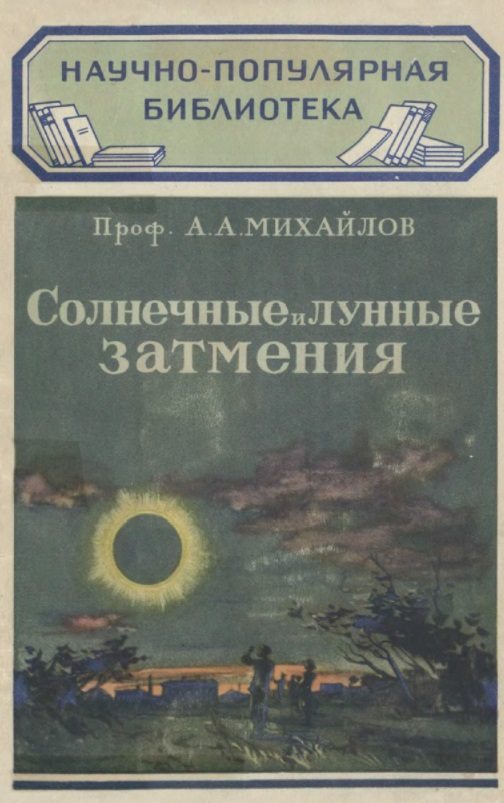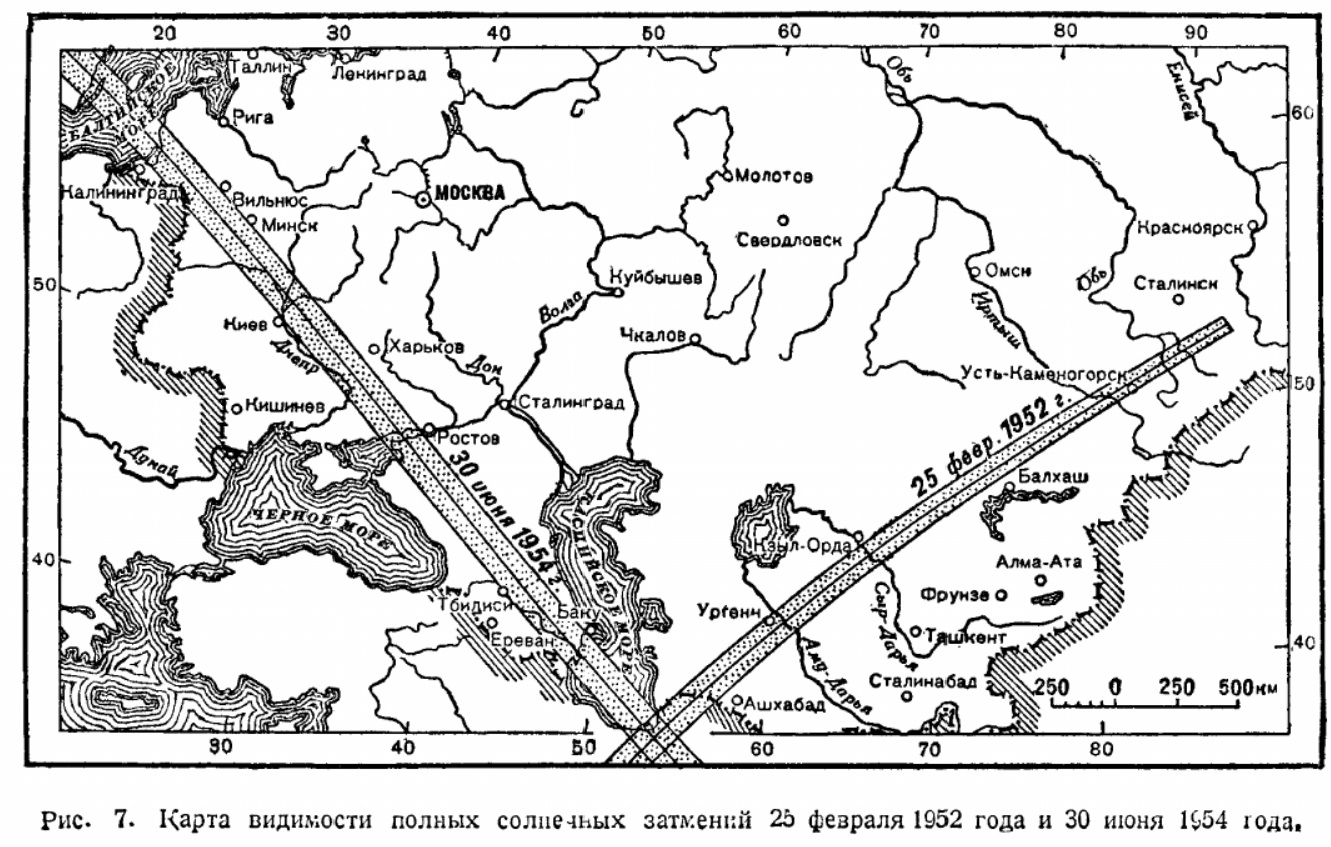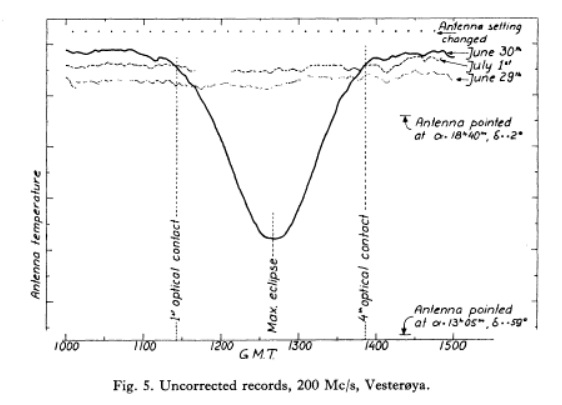 Millions of Americans were able to witness the Great American Eclipse of 2017 or will be able to see the eclipse of April 8, 2024. The 2017 eclipse crossed the United States from northwest to southeast, and the 2024 eclipse will run from southwest to northeast. The Soviet Union had a similar pair of eclipses on 25 February 1952 and 30 June 1954. The intersection of the two American eclipses is near Carbondale, Illinois. The paths of the two Soviet eclipses had their intersection at a point in northern Iran, just south of the Caspian Sea.
Millions of Americans were able to witness the Great American Eclipse of 2017 or will be able to see the eclipse of April 8, 2024. The 2017 eclipse crossed the United States from northwest to southeast, and the 2024 eclipse will run from southwest to northeast. The Soviet Union had a similar pair of eclipses on 25 February 1952 and 30 June 1954. The intersection of the two American eclipses is near Carbondale, Illinois. The paths of the two Soviet eclipses had their intersection at a point in northern Iran, just south of the Caspian Sea.

The illustrations shown here are from a Soviet booklet published in 1950. In addition to discussing solar and lunar eclipses generally, it contains information about the two Soviet eclipses of the 1950’s, including the map shown above. It also contains a table showing all total solar eclipses worldwide through 1999.

Prof. Mikhailov. Institute of Astronomy, Russian Academy of Sciences photo.
The booklet, Солнечные и лунные затмения (Solar and Lunar Eclipses) by Prof. A.A. Mikhailov, part of the series Научно-популярная библиотека (Popular science library), reveals that the path of the 1954 eclipse came very close to a number of Soviet cities, including Kaliningrad, Vilnius, Minsk, Kiev, Rostov, and Baku. The 1954 eclipse had also been visible in the United States, starting at sunrise in Nebraska, and passing over South Dakota and Minnesota (including Minneapolis and St. Paul). It then passed over Canada, Greenland, a tiny portion of Iceland, Norway, and Sweden, before entering the Soviet Union near Kaliningrad.
The 1952 eclipse, after passing over Africa, went over a less populated area of Turkmenistan, Uzbekistan, Kazakhstan, and Asiatic Russia.
This video shows the 1954 eclipse from Minneapolis:
This page contains a reminiscence and photo of the same eclipse from Kiev. The Google translate function does an admirable job of making it readable in English.
One of the scientific observations made during the 1954 eclipse was the measurement of radio emissions by the sun on various frequencies, documented in this 1955 article in the journal Astrophisica Norvegica, vol. 5, p. 131. The graph below shows the signal as received in Vesterøya, Norway, on 200 MHz. As would be expected, the solar noise reaches a minimum value at the time of total eclipse.
Information on how to form a Minnesota LLC.

